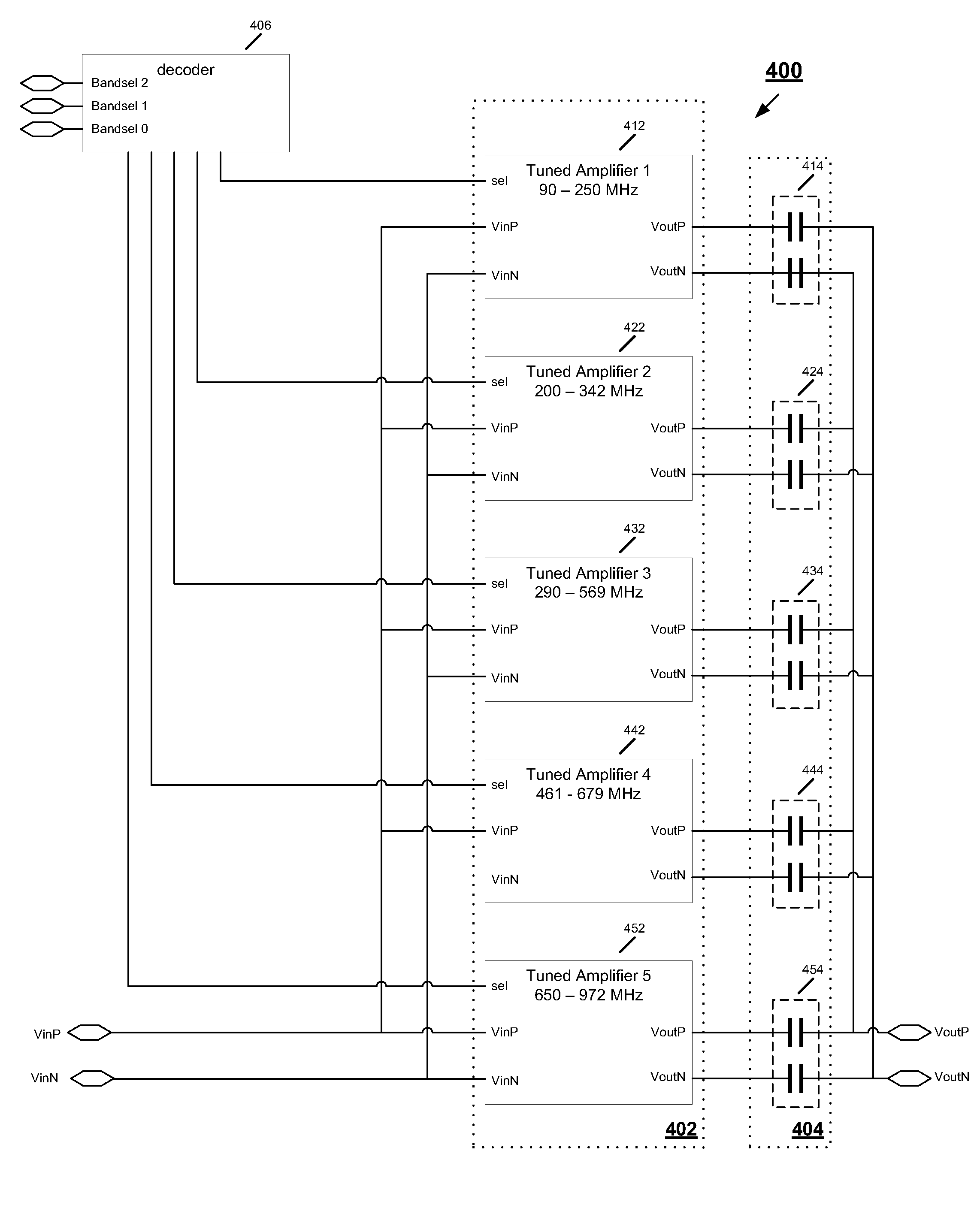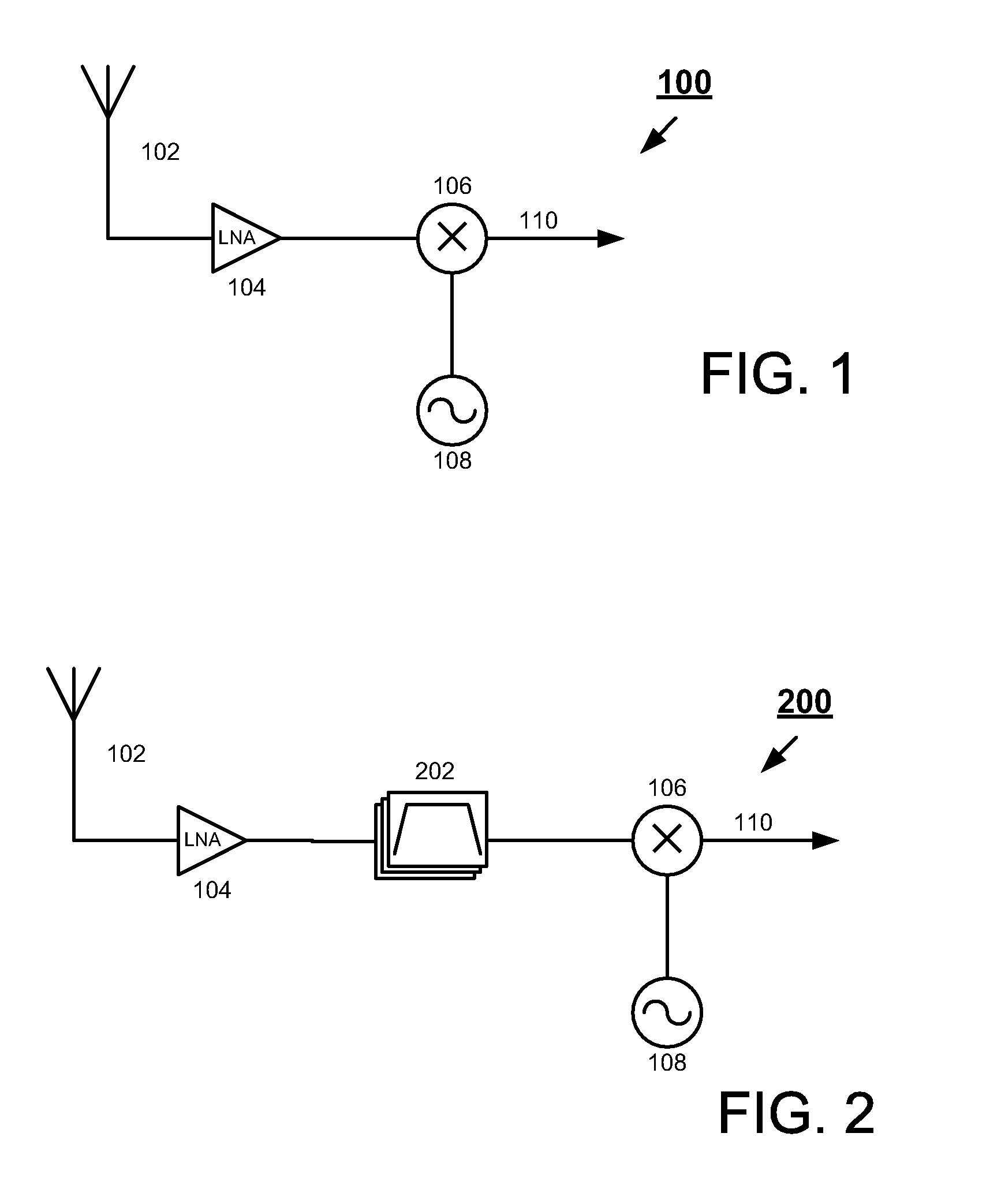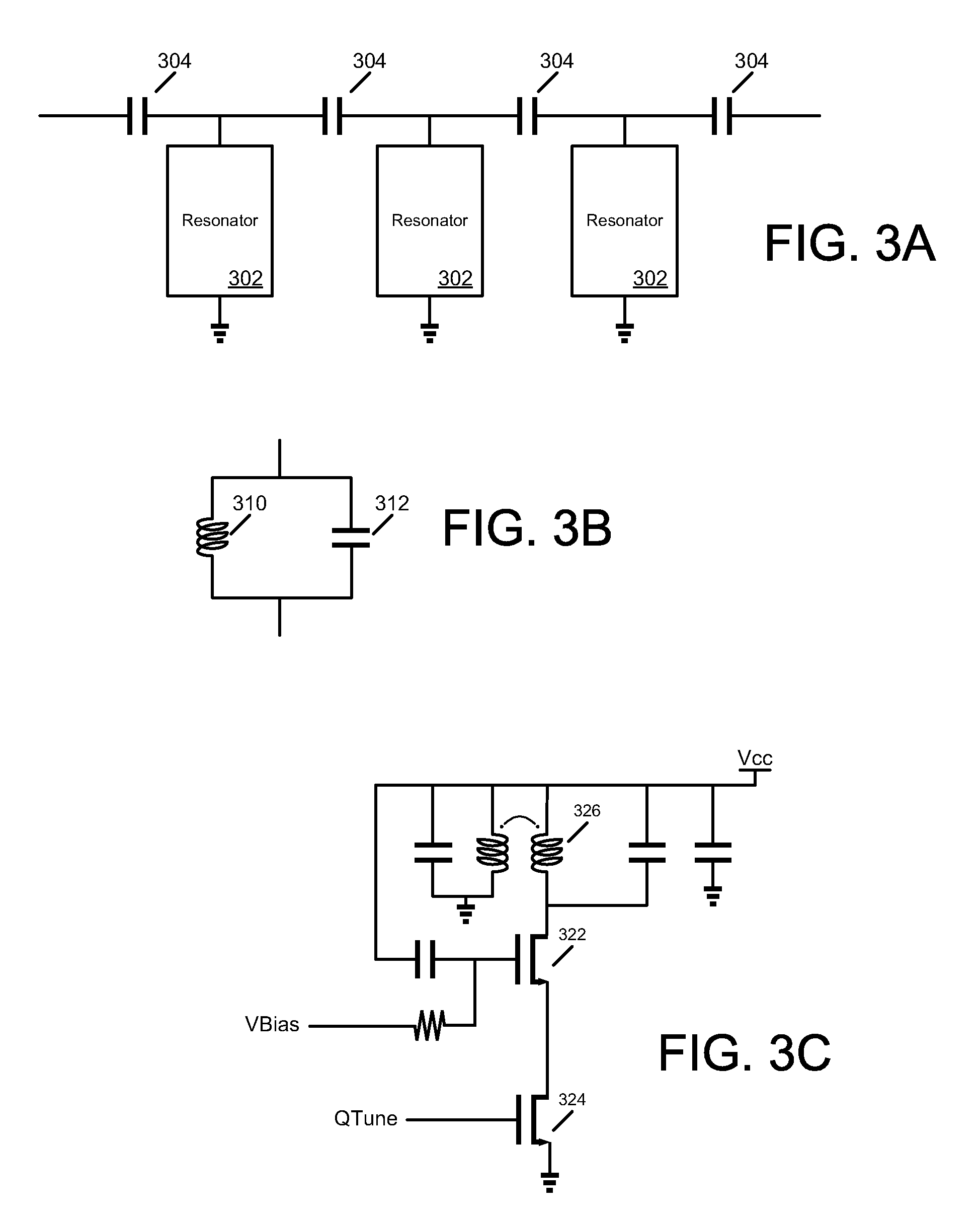Integrated Wideband RF Tracking Filter for RF Front End with Parallel Band Switched Tuned Amplifiers
a wideband, filter technology, applied in the field of radio frequency (rf) tuners, can solve the problems of low power consumption, long battery life, and power consumption in silicon rf tuners is the receiver architecture, and achieve the effect of uniform gain
- Summary
- Abstract
- Description
- Claims
- Application Information
AI Technical Summary
Benefits of technology
Problems solved by technology
Method used
Image
Examples
Embodiment Construction
[0038]Embodiments of the present invention resolve many of the difficulties in implementing an RF tracking filter in an integrated broad band application. FIG. 4 illustrates an embodiment of an RF tracking filter for broad band applications. Filter 400 comprises a plurality of parallel tuned amplifiers 402. The plurality of parallel tuned amplifiers 402 are coupled to a common differential output through a plurality of pairs of coupling capacitors 404. More specifically, a differential input signal is supplied to each of the tuned amplifiers and coupled to a common differential output through a pair of coupling capacitor for each amplifier. For example, tuned amplifier 432 is coupled to the differential output through coupling capacitors 434. Each of the tuned amplifiers is designed to cover a different band within the overall frequency range. In order to account for the presents of mismatch and process-voltage-temperature (PVT) center frequency shift, the bands should overlap with ...
PUM
 Login to View More
Login to View More Abstract
Description
Claims
Application Information
 Login to View More
Login to View More - R&D
- Intellectual Property
- Life Sciences
- Materials
- Tech Scout
- Unparalleled Data Quality
- Higher Quality Content
- 60% Fewer Hallucinations
Browse by: Latest US Patents, China's latest patents, Technical Efficacy Thesaurus, Application Domain, Technology Topic, Popular Technical Reports.
© 2025 PatSnap. All rights reserved.Legal|Privacy policy|Modern Slavery Act Transparency Statement|Sitemap|About US| Contact US: help@patsnap.com



